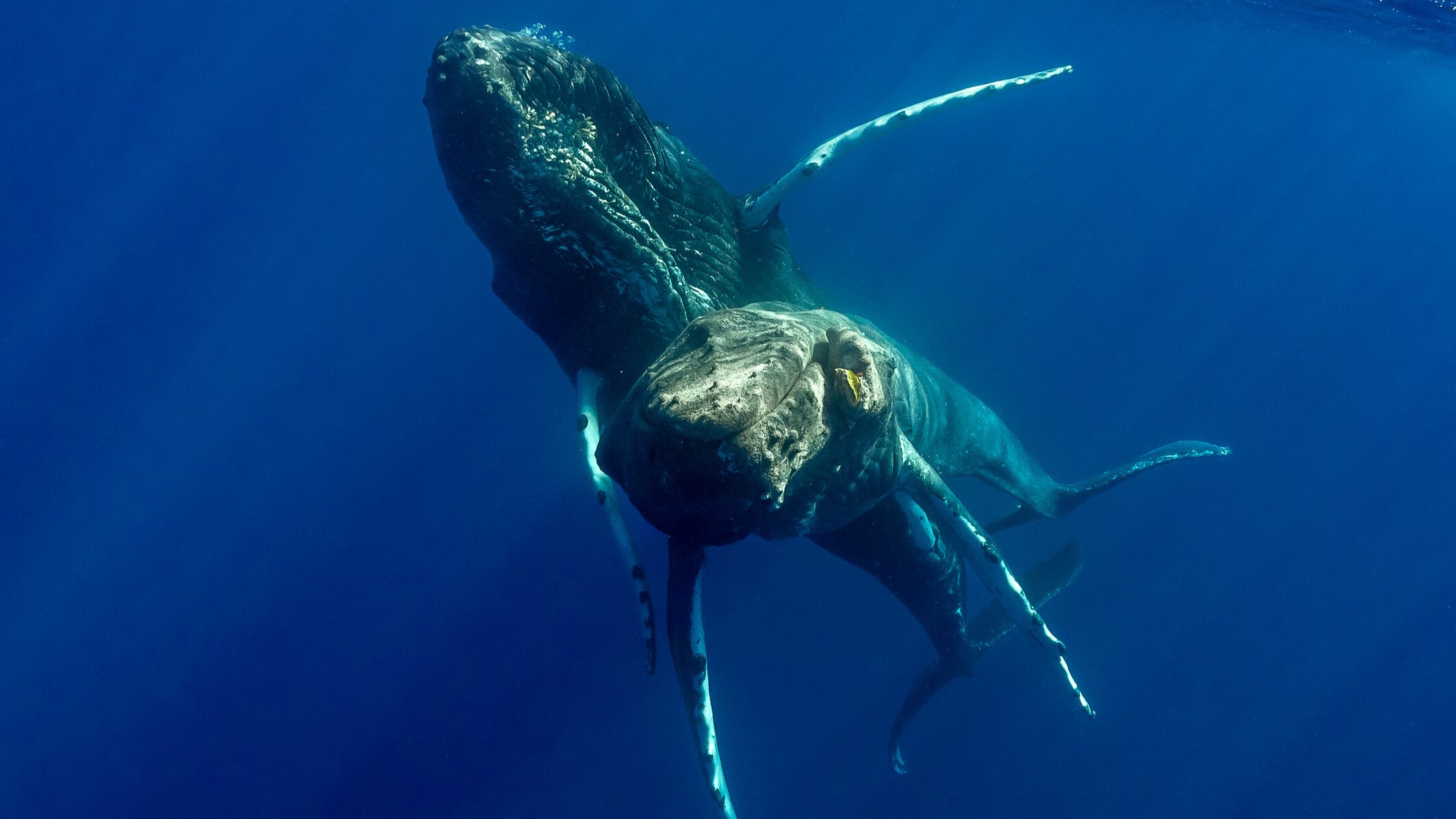Male humpback whale seen forcing sex on emaciated, injured male in extremely rare encounter
Photographs taken off Maui, Hawaii, show the first documented case of a male humpback whale sexually penetrating another male, with the latter appearing injured and covered in parasites.

For the first time ever, researchers have documented penetrative sex between two humpback whales. What’s more, both whales were male.
A private vessel spotted the adult whales off the Hawaiian island of Maui in January 2022. Citizen scientists on board the boat noticed one of the animals was an unusual, brownish color and deployed cameras underwater to record the encounter. What they captured is the first known case of a male humpback whale (Megaptera novaeangliae) inserting its penis into another male's genital slit.
"This is the first report of penetration by a humpback whale, and the first report of sexual activity between two male humpback whales," researchers wrote in a study published Tuesday (Feb. 27) in the journal Marine Mammal Science.
The whales swam in circles around the boat for 30 minutes, with one of the humpbacks (Whale B) seemingly pursuing the other (Whale A), according to the study. Whale A looked emaciated, had a significant jaw injury and was covered in whale lice (Cyamus boopis) — parasites that indicate poor health and are the probable cause of the skin discoloration noted by citizen scientists at the start of the encounter. Whale B, on the other hand, appeared healthy and strong.
Related: Kelping is a 'global phenomenon' sweeping the world of humpback whales, scientists say
Whale B also had its penis extruded from its usual hiding place inside the genital slit during the entire encounter. "Whale B repeatedly approached from the rear of Whale A and penetrated the second whale, appearing to hold Whale A in place with its pectoral fins," the researchers wrote.
In response to Whale B's advances, Whale A contorted its body into an "S" shape — a posture which previous research suggests humpbacks in Hawaii adopt when they feel threatened or stressed.
Get the world’s most fascinating discoveries delivered straight to your inbox.
"It is possible that the use of this posture by Whale A meant that this behavior was unwelcome, but that Whale A lacked the energy to engage in avoidance strategies," the researchers wrote in the study. "It was slowly attempting to swim away from Whale B but was not making any sudden or powerful movements and did not dive out of sight at any point."
After penetrating Whale A several times, Whale B dove and did not reappear, according to the study. Whale A remained at the surface for a few minutes before also plunging out of sight. It is unclear what caused Whale A's jaw injury, but the researchers suggested it may be the result of a collision with a ship.
Male-male sex in cetaceans — a group of marine mammals that includes whales, dolphins and porpoises — is well documented for common bottlenose dolphins (Tursiops truncatus) and several other species. Research suggests cetaceans engage in such homosexual activity to establish or reinforce dominance among males, to learn or practice reproductive behaviors, to form social alliances and even to reduce social tensions.
Related: Orcas are learning terrifying new behaviors. Are they getting smarter?
Whale B may have mistaken Whale A for a female, the researchers suggested, or it could have been trying to reinforce their social relationship. But the sexual behavior may also have been "an expression of dominance over a weak and injured competitor," they wrote in the study.
While this is the first documented case of homosexual penetration in humpback whales, a similar incident reported in 1998 described a male humpback whale extruding its penis as it swam near the corpse of another male that had died shortly before.
"It is striking that the only two observations of such behavior in the scientific literature involve ailing or deceased whales," the researchers wrote in the new study. "Whether such behavior would occur between two healthy males is unknown."

Sascha is a U.K.-based staff writer at Live Science. She holds a bachelor’s degree in biology from the University of Southampton in England and a master’s degree in science communication from Imperial College London. Her work has appeared in The Guardian and the health website Zoe. Besides writing, she enjoys playing tennis, bread-making and browsing second-hand shops for hidden gems.



